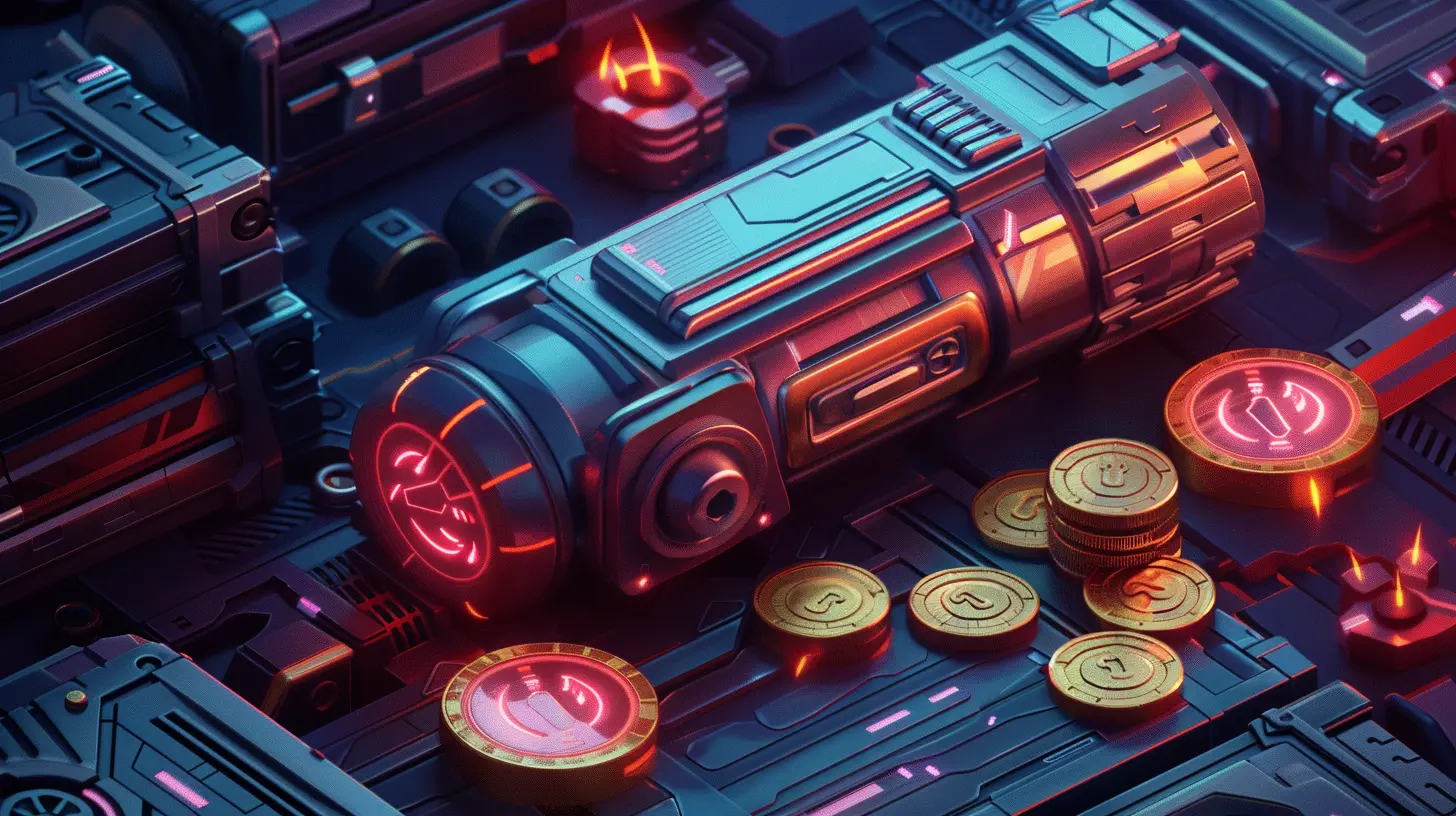The Future of Microtransactions: Predictions from Industry Experts
24 October 2025
Microtransactions. Just the word alone can send shivers down the spine of any gamer. Love ‘em or hate ‘em, they're here to stay. But the big question is — where are they headed next? Will they become more player-friendly? Or are we diving headfirst into a future filled with paywalls and digital wallets screaming for mercy?
We talked to industry insiders, sifted through countless debates, and gathered expert insights to paint a clear picture of what lies ahead for microtransactions in gaming. Buckle up, because the future of gaming’s most controversial feature is... complicated.

What Are Microtransactions, Anyway?
Before we go full throttle into the future, let’s rewind a bit.Microtransactions are small purchases made within a game. We're talking skins, power-ups, loot boxes, battle passes — you name it. They might cost you a few cents or a few bucks, but collectively, they make billions for the gaming industry.
Think of them as the popcorn at the movies. You didn’t come for it, but somehow, you've dropped $12 on something you could’ve lived without.

The Rise of Microtransactions — A Quick Recap
Back in the day, you bought a game, and that was it. No extra costs. Just you and your controller versus the world.Then came mobile gaming, free-to-play (F2P) titles, and the rise of online multiplayer. Game developers realized they could rake in more money after the initial purchase — or skip the price tag upfront altogether and monetize through ongoing purchases.
Suddenly, microtransactions weren’t just an option — they were a business model.
Fast forward to today, and even full-priced AAA titles are loaded with cosmetics, upgrades, and digital goodies — all behind that tempting "Buy Now" button.

Expert Predictions: Where Microtransactions Are Heading
We asked developers, UX designers, economists, and marketing analysts what they think is next for microtransactions. Here's what they had to say — and yes, some of it might surprise you.1. Goodbye Loot Boxes, Hello Transparency
Loot boxes are getting the boot — and not just because gamers hate them. Governments around the world are cracking down on what many consider to be a form of gambling.Expert take: “We expect regulations to force publishers to show exact odds or remove randomized purchases entirely,” says Karen Liu, a UX consultant for mobile games. “This will push devs to redesign their systems with more clarity and trust.”
Expect to see more direct purchases. Players won’t just be rolling a dice — they’ll know exactly what they’re buying.
2. Subscription Models Will Gain Ground
Game Pass, PlayStation Plus, EA Play — subscription-based gaming is on the rise. And microtransactions are finding their way into this model, too.Expert take: “What Netflix did for movies, Xbox Game Pass is doing for games,” says Mark Jenkins, a game economy analyst. “But microtransactions will still exist — the key difference is they’ll be optional add-ons rather than the main revenue stream.”
So yeah — you might get access to hundreds of games... but that exclusive sword skin? Still gonna cost you.
3. Blockchain and NFTs — Not Dead Yet?
Remember the NFT hype? While the buzz has cooled down, some industry folks still believe blockchain tech could reshape in-game economies.Expert take: “Games will experiment with truly ownable digital assets,” says Elena Morales, lead developer at a Web3 studio. “Players could trade items across games, not just within them."
Big if true. But it raises questions around security, inflation, and accessibility. Will the average gamer want their fantasy sword tied to a crypto wallet? Time will tell.
4. More Personalization, Less Annoyance
Let’s be honest — most in-game shops are cluttered nightmares. Endless pop-ups, irrelevant bundles, and “limited time” offers that last for weeks.Expect smarter algorithms.
Expert take: “AI will help create personalized in-game stores,” says Ryan Haines, a monetization strategist. “If you're into space skins, you’ll see them first. If you hate boosters, you won't ever get offered one."
Microtransactions will get smarter — and hopefully, less annoying.
5. Microtransactions Will Sneak Into Single-Player Games
Bad news if you thought single-player games were safe.We’re already seeing cosmetic packs, XP boosters, and even paid alternate endings in solo experiences. This trend isn't slowing down anytime soon.
Expert take: “If the game is big enough, publishers will find a way to monetize it post-launch,” says Alexis Varga, a product manager at a AAA studio. “Even narrative-driven games are getting microtransaction support.”
Yup. That RPG you love? Get ready for $4.99 side quests.
6. Ethical Microtransactions — A New Gold Standard?
The industry is waking up to gamer frustration. Trust is currency now — and developers know they can't keep milking whales (big spenders) without backlash.Expert take: “The future is about value, not manipulation,” says Chris Tenner, a behavior designer. “The most successful games will see microtransactions as a way to enhance — not disrupt — gameplay.”
We’re talking battle passes that respect your time, cosmetics that don’t give unfair advantages, and stores that show you what you’re spending.

The "Pay-to-Win" Dilemma: Still a Hot Topic
Let’s address the elephant in the room: pay-to-win.Games that give paying players a competitive edge catch flak — big time. But they’re still out there, raking in cash.
Why? Because they work. Especially in mobile games and emerging markets.
The future? A split. Competitive games will push for fairness, offering only cosmetics for cash. Casual and PvE games? They’ll keep mixing in power-ups and shortcuts for players who don’t want to grind.
Is it fair? Depends who you ask. But it’s not going away.
How Gamers Are Shaping the Future
Never underestimate the power of community.Gamers have staged boycotts, review bombings, and social media takedowns to push back against greedy monetization. And guess what? It works.
- EA’s infamous Battlefront II loot box scandal? Gamers forced changes.
- Diablo Immortal backlash? It made headlines.
- Helldivers 2’s PSN account requirement? Pulled back in days.
Developers are listening more than ever — or at least, pretending to. Expect future microtransactions to be crafted with optics in mind. What looks fair, feels optional, and doesn’t trigger Reddit meltdowns? That’s what will survive.
Regional Pricing and Economic Flexibility
Here’s something you probably don’t think about often — gamers around the world don’t earn the same income, yet microtransactions often have flat pricing globally.That's shifting.
Expert take: “Localized pricing is key,” says Deepak Singh, a mobile game publisher. “We're already testing dynamic pricing based on region, engagement, and player behavior.”
Is it creepy? Kind of. Will it make things more affordable? Possibly.
Gaming’s global — and microtransactions are adjusting to that reality.
Will Players Ever Fully Accept Microtransactions?
Honestly? Kinda.We hate them... but we still buy them.
It boils down to this: if the content feels worth it, we’re cool with it. If it feels like manipulation, we revolt.
The future of microtransactions depends on how well developers walk that tightrope — give value, avoid frustration, and don’t push too hard. Players are smart, vocal, and incredibly internet-savvy.
Mess up, and you’ll hear about it.
Final Thoughts: The Line Between Choice and Chore
Here’s the deal: microtransactions aren’t inherently evil.They’ve enabled tons of free-to-play games, funded ongoing support, and introduced cool customization options. But when they cross the line from choice to chore — they fall apart.
The future of microtransactions will be about balance. More transparency, smarter personalization, ethical monetization, and maybe even a little blockchain on the side (don’t roll your eyes too hard).
Whether you’re buying a new skin, unlocking a battle pass, or dodging every pop-up thrown your way, just remember — your time and attention are worth something. Game on, and spend smart.
all images in this post were generated using AI tools
Category:
MicrotransactionsAuthor:

Lana Johnson
Discussion
rate this article
1 comments
Mercy Dodson
What a fascinating read! It's exciting to hear insights from industry experts on the future of microtransactions. The evolving landscape promises both challenges and opportunities for gamers and developers alike. Looking forward to seeing how these predictions unfold in the coming years!
October 25, 2025 at 4:33 PM

Lana Johnson
Thank you for your thoughtful comment! I'm glad you found the insights valuable. It will indeed be interesting to see how these trends develop!


